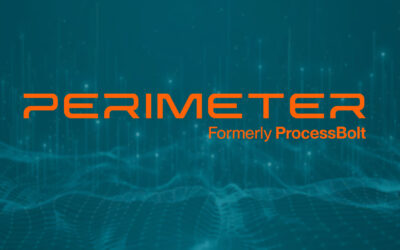As a vendor, your clients are the lifeblood of your business, so it’s imperative that you keep them happy and confident in your service offerings. If you can accomplish this, you could have clients for life. If you can’t, the competition could quickly step in and take over.
Clients switch vendors for a variety of reasons, some of which might be unrelated to your performance. Often, clients will put the contract out to bid to comply with regulations. Others may be price-checking and find a lower price rather than renegotiate your pricing. And sometimes, a change in the business forces a client to seek our new vendors. Increasingly, one of the prominent reasons for vendor switching is that the client is not satisfied with a vendor’s risk profile.
When it comes to vendor risk management, there’s a wide variety of reasons why a contract could get canceled or never even initiated. When the reason lies in an area that is entirely within your control, making a few modifications can help ensure it doesn’t happen with the next client. These five tips can help build confidence in you as a vendor when a client approaches you for consideration.
1. Update Your Policies
If you need to blow the dust off your policy manual every time a client asks about it, it’s time to make this a priority. In many companies, policies are left up to the security team to review and update whenever they have time. By not prioritizing policies and procedures, updates and improvements rarely happen, and this can lead to inconsistent policy enforcement.
Policies are a necessity for security management. Every potential client should take an interest in reviewing your policies to ensure their own security. At the very minimum, every company should have policies in place for information security, incident response, disaster recovery, BYOD, remote access, vendor access, and data retention and backups. To build confidence with clients, these policies must be up to date and followed by every employee in your company.
2. Don’t Complain About the Format
Before a new contract is signed, many companies will request that you complete a vendor security assessment. As a vendor, you’ve probably seen your fair share of these. With minimal national standards in place, vendor risk management is a haphazard process, allowing each client to select their preferred format for the questionnaire. Excel spreadsheets, locked Word documents and web-based security questionnaires are popular formats, requiring you, as the vendor, to switch gears each time a different format is presented.
Vendors that get locked into one particular format and complain when a different format is presented can quickly alienate a client. To remedy this situation, it’s important to find a tool that allows you to answer vendor security assessments regardless of format. This type of tool will not only ease the frustration but can help your team complete security questionnaires faster. ProcessBolt is built for this purpose and can work with any Excel, Word, web-based or PDF questionnaire to help you answer security assessments quickly.
3. Answer Honestly and Consistently
When your security team completes a client’s vendor security assessment, how do you know that the answers are consistent from one questionnaire to the next? Most questionnaires are similar, yet there can be a handful of unique questions that must be addressed, sometimes by members outside your security team. What procedures do you have in place to ensure that all answers are honest and consistent across all questionnaires?
The most efficient way to ensure questions are responded to consistently and honestly is to store your answers in a central repository that is updated frequently as policies and personnel change. This way, regardless of the questions or the person completing it, your answers are always the same.
4. Close the Deal by Acting Fast
If you take days, even weeks, to complete a vendor security assessment, your clients, and your own sales team, will become frustrated. Stalling the sales cycle to complete a security questionnaire can jeopardize the deal, especially if your competition has a system in place to complete them quickly.
The key to completing a vendor security assessment quickly is automation. An automated process uses auto-matching technology to match your answers to the questions. Instead of copying and pasting answers from one spreadsheet to another, you can simply click on the correct answer stored in a central repository.
5. Work with Your Client to Remediate any Issues
After the vendor security assessment is finalized and delivered to your client, they may uncover certain issues. If your client responds with a plan of action to resolve areas of perceived risk, your willingness to quickly and efficiently remediate these issues will be indicative of your willingness to keep your client happy. Ignoring the issues will open the door for the competition.
Learn More
If you’re ready to learn how ProcessBolt helps vendors, complete this form.




